http://zhangnan5.myblog.arts.ac.uk/files/2023/11/JABBERWOKY-3.pdf
I chose the jabberwoky to research and the reason why I chosed it thats because jan svankmajer is one of my favorite artists and most of the time before I just watched his work so I think it might be a good chance to know him and his work deeper.
I think if we want to understand his work,we should first understand jan.And we can see here that I’ve set up two lines that I think they are the part of main reasons for his personal style.
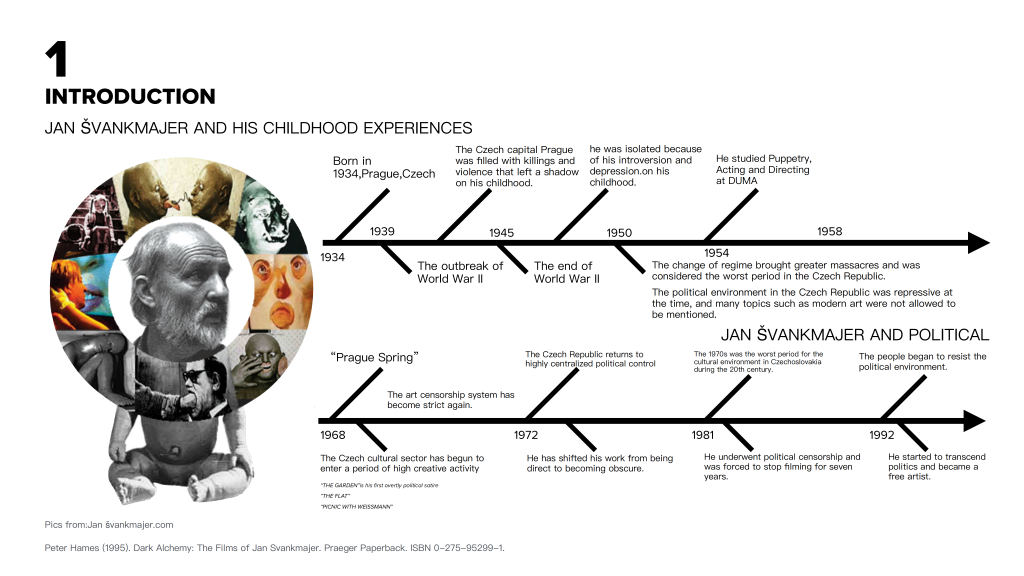
The war never stopped while his groth and he also formed a shy and depressed personality, which caused he was being bullied by classmates during his school years.
He entered the academy of performing arts in prague to study puppet theatre. The Czech Republic had its first revolution, the Prague spring 10 years later
At The same time he produced his first short film with political satire, The garden.
His work remained politically charged for the thirty years,but due to the changing regime of the time, his work was censored by the government and in 1981 he was banned from creating for seven years.
This section is about the background of the text of this short film.
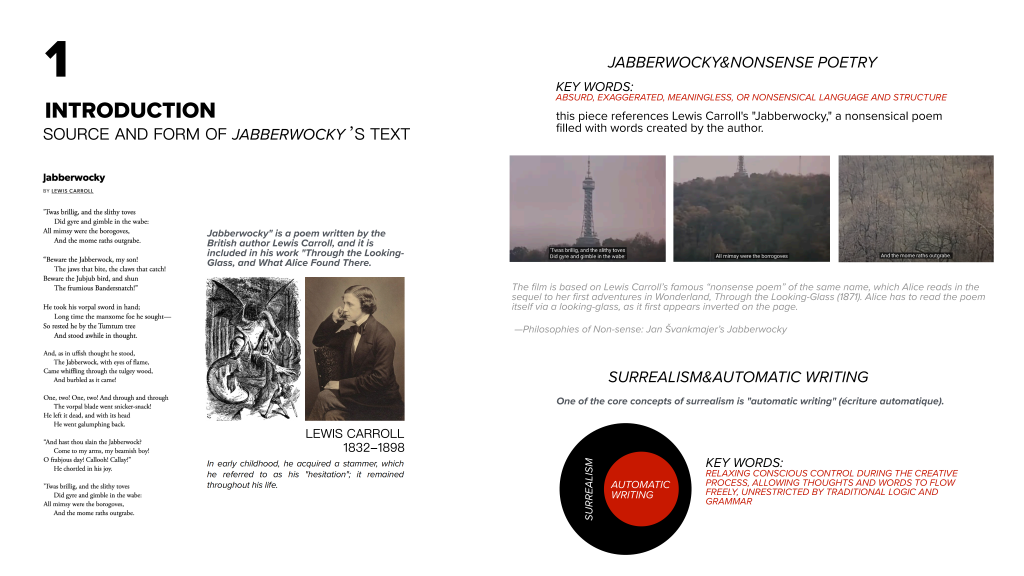
It is interesting to note that the author of this poem also had some social difficulties due to stuttering
What’s interesting about this poem is that it’s a nonsense poem, and it has a lot of words created by the author himself. I think the poem has a certain similarity to automatic writing in Surrealism, but in fact it is not.
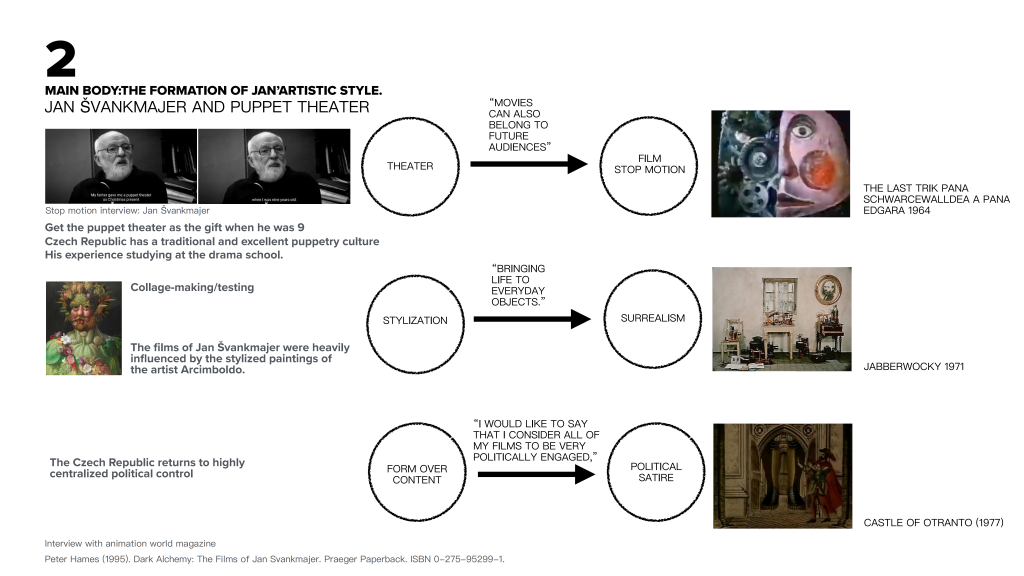
In this part, I researched three changes in his style.
I would like to focus on his connection with puppets, which is another important reason for the development of his later style.
In his interviews he mentioned that his parents gave him a puppet theatre as a gift when he was 9 years old and that this was the beginning of his later studies in puppetry.
Puppet theatre is very popular in the Czech Republic and has developed into a very mature cultural system.
One of the reasons why I think its important is because he moved a lot of puppetry in his later work. Even when his creative medium changed from theatre to stop-motion animation.
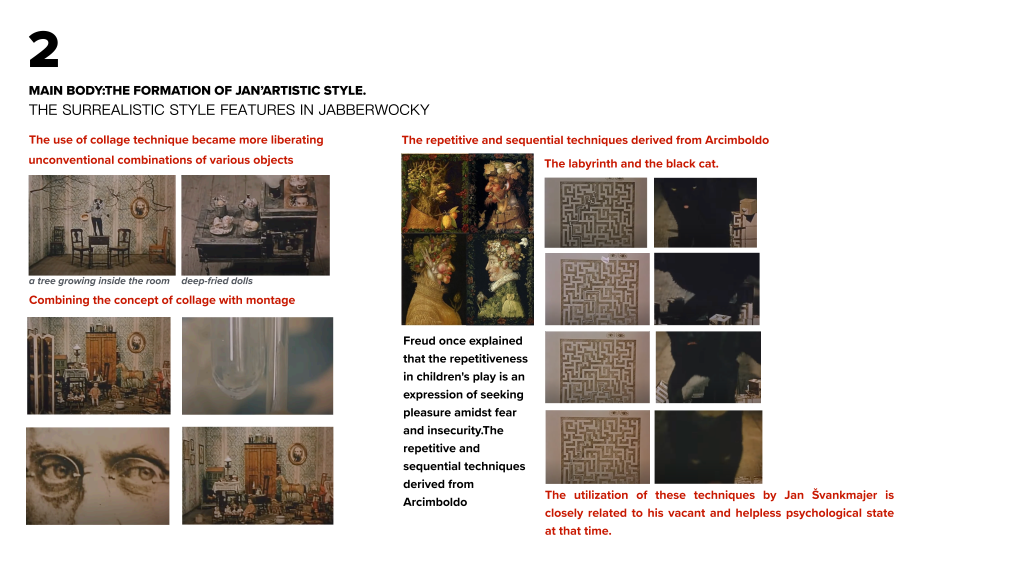
The other point I wanted to mention is why he went from theatre to stop-motion animation, and one of the very interesting points he makes is that he believes that film is an art that beyond time, whereas theatre is not. Film can be recorded.
In this section I have extended the research by analysing the details in the short film.
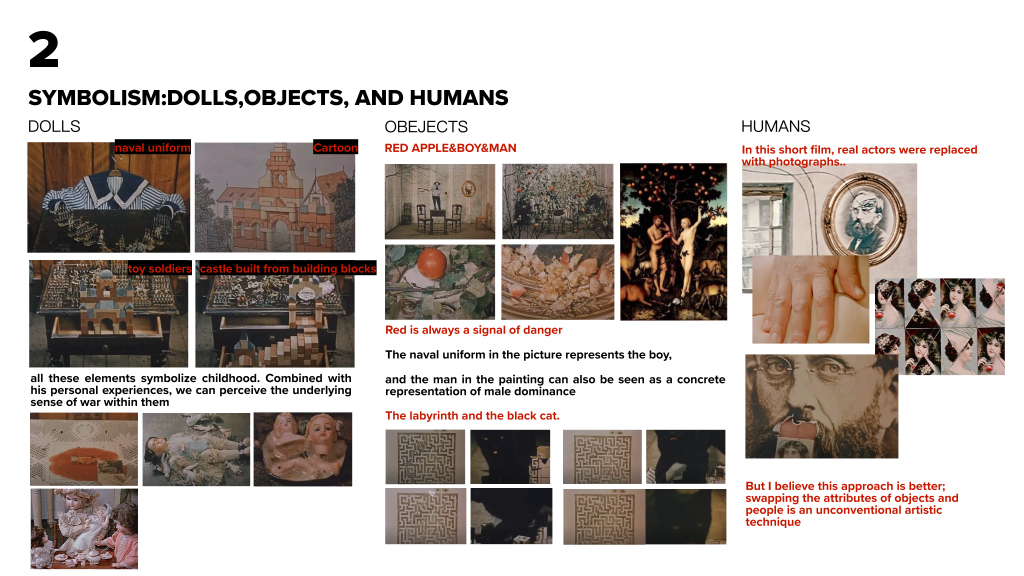
This section is about how surrealism is reflected in his work.And how editing is used in his work to achieve surrealism.
I think this is a kind of projection from his heart. I think the essence of creation is the projection of the inner self, so I can feel the shadow of his childhood lingering in his creation.
I think symbolism is a topic that cannot be avoided in his works. Puppets, everyday objects and real people are the elements that often appear in his works. He himself has said that he likes to bring life to objects, and this cult of “objects” is one of the features of surrealism.
I think one of the most noteworthy points in there is about the relationship between the dolls and the people; in the short film the dolls are moving while the people are replaced with flat photographs, and the attributes of both change.
As I watched the film, the word “discipline” displane kept popping into my head, and even though I know that Foucault’s book was only published in 1978 and is much later than this film, I still think that they are somehow connected. Children grow up being dogmatised by society, as if in a cage, losing their individuality and freedom to develop.
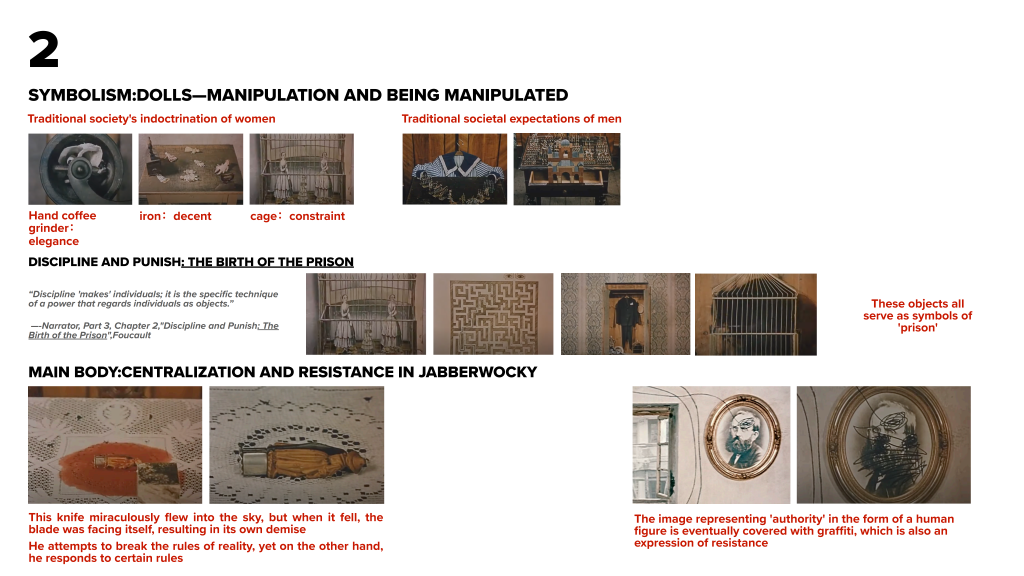
I think this short film always expresses a mood of resistance, a mood that encompasses the first level of resistance between the child growing up and being domesticated, which is actually a kind of resistance that the author is constantly fighting against his own childhood shadow, but at the same time it’s also a resistance between the individual and the politics of the Czech Republic under the turblent political rule of the time.